On the 6th of December Frances Clarke, Michael McDonnell and Bridget Neave visited Miller Technology High School on behalf of the University’s Social Inclusion in Humanities Program. Miller Technology is a unique school as 40% of its students are refugees.
The attendees partook in the Stage 6 humanities awards afternoon. The essay winners of the year 11 mentoring program were Wasan Al Zuihari for first prize and Dylan Demerovich for second prize. They had investigated gender roles in Spartan society and Julius Ceaser, respectively. The winners were recognised by the department representatives, their teachers and peers. They were congratulated by Mike and Frances and awarded with bookstore vouchers. The winner for best presentation, Dylan Demerovich, gave his presentation on the life of Julius Caesar to the gathering.
Mike and Bridget followed with short presentations on the value of tertiary education, the challenges that face first in family/low ses students, and how students can find support and opportunities.
The day ended with afternoon tea and the opportunity for the visitors to talk with the students. It was enriching and challenging to learn about the life experiences and future plans of the diverse group of students. Mike, Frances and Bridget all reflected on the infectious enthusiasm and ability displayed by the students in their studies and towards tertiary education.
Unfortunately, Miller Technology has a very low rate of sending students to the University of Sydney. Tony Podolsak, headteacher of history, spoke anecdotally of students giving up places at USYD due to not knowing anyone who had gone there and a perceived lack of support they would have. Barriers like this are what the Social Inclusion unit seek to challenge with the Year 11 Mentoring Program.
A big thanks to our partners at Miller Tech, especially Tony Podolsak, who make the Social Inclusion visits so meaningful to both the students and staff involved.
For anyone interested in being more involved with social inclusion in history and becoming part of the committee for 2018, don’t hesitate to email the project manager Bridget Neave at [email protected].

By Bridget Neave
Promotions in the Department of History
Many congratulations to our trio of new Senior Lecturers: Chin Jou, Miranda Johnson, and Marco Duranti. Their promotions were announced today.
All three published path-breaking and well-received books over the past year (or so). Details of them can be found here, and here.
And a sampling of some of the reviews can be found here.
In addition to their published work, all three are dedicated and innovative teachers and supportive colleagues. Well done to all.
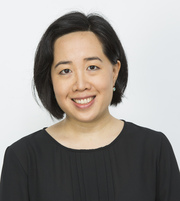
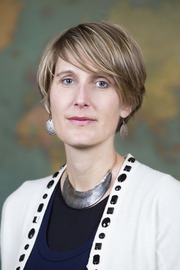

Historians in the News
Professor Kirsten McKenzie was elected a Fellow of the Australian Academy of the Humanities.
Dr. Miranda Johnson weighed in on the Australia Day debate by talking about the ongoing legacy of settler-colonialism with the international online magazine, OZY.
ARC Research Fellow Ben Silverstein won the History Australia and Taylor & Francis best article for 2017.
PhD students Hollie Pich and Marama Whyte have both won Endeavour Awards to undertake research in the U.S. in 2018. These highly-competitive awards are provided by the Australian government to scholars engaging in study, research, or professional development overseas. Marama has been granted the Endeavour Postgraduate Scholarship to conduct 6-12 months of research at New York University, sponsored by Professor Thomas Sugrue, while Hollie has won an Endeavour Research Fellowship to conduct 4-6 months of research at Duke University, sponsored by Professor William Chafe.
Marama Whyte has also won the Tempe Mann Travelling Scholarship for 2018, which is awarded by the Australian Federation of Graduate Women-New South Wales, taking up an honour that Hollie held the year before.
Professor Glenda Sluga recently presented at the Graduate Institute Geneva on the history of global governance of the environment. For the Geneva report on this talk click here. Glenda is also cosponsor of this Cambridge conference on the global history of sovereignty and natural resources. This was the winning concept in an international competition. A copy of the poster is available here, and you can download the final program here. The Guardian also reported academics from around the world including Professor John Keane from the Department of Government and International Relations and Professor Glenda Sluga from the Department of History are rallying in support of Dr Maha Abdelrahman, a Cambridge University scholar whose PhD student Giulio Regeni was murdered in Egypt.
The New Republic (US) discussed Dr Chin Jou’s new book, Supersizing Urban America about fast food and obesity, and she was interviewed by KPFA Radio (US) about it. Dr. Jou also wrote a piece on the global expansion of the fast food industry in the Washington Post.
University of Sydney PhD student Emma Kluge has a new piece on the UN History website on Decolonization Interrupted: U.N. and Indonesian Flags Raised in West Papua
Channel 7 (Sydney, Perth, Melbourne, Brisbane) interviewed Dr Miranda Johnson from the Department of History about broadcaster Stan Grant’s calls to change a statue of Captain Cook in Hyde Park.
Dr. Marco Duranti’s The Conservative Human Rights Revolution and Prof Mark McKenna’s From the Edge were longlisted and shortlisted respectively for the CHASS Australia Book Prize 2017.
Dr. Duranti was also interviewed on ABC Radio National about the human rights revolution born in a conservative UK after World War II.
Dr Sophie Loy-Wilson was interviewed on ABC Radio National about Australian migration to China and the story of Daisy Kwok, a Chinese-Australian socialite who was born in Sydney and moved to China in 1917.
Dr. Ivan Crozier and Dr. Peter Hobbins have both spoken recently in the University of Sydney Rare Books ‘Rare Bites’ series of lunchtime talks, which they video, caption and upload to YouTube: Peter Hobbins speaks on Researches on Australian Venoms (1906); Ivan Crozier speaks on Sexual Inversion (1897), and Dr. Hobbins featured on an episode of ABC TV’s Hard Quiz, and co-authored an article published on The Conversation about misconceptions around the fatality risks of snakebites.
Professor Dirk Moses recently wrote about the pros and cons of “flipping” the classroom in a large first year unit in Teaching@Sydney.
Professor Sheila Fitzpatrick authored an article published in the Australian Financial Review about the 100 years since the Russian Revolution, and she was interviewed by ABC Radio Melbourne about her new book, Misckha’s War.
Professor Mark McKenna from the Department of History was quoted in the Daily Telegraph about Australia’s historical monuments, and he also wrote a review of Donald Horne: Selected Writings, published in the Weekend Australian.
Sky News interviewed Professor James Curran from the Department of History about US President Donald Trump’s reaction to the events in Charlottesville and was interviewed on ABC Radio Sydney, 2SM Sydney and Sky News about the history of the ANZUS alliance in light of the Prime Minister confirming Australia would join US military action if North Korea were to attack. Professor Curran also wrote an article about what the ANZUS treaty obliges, published in the Australian Financial Review, and another in the Australian Financial Times about Australia’s ongoing alliance with the US during the Trump presidency. Weekend Australia published an article by Professor James Curran from the Department of History and the United States Studies Centre about how US President Donald Trump has intensified the cultural crisis gripping the US. CNN (US) quoted Professor James Curran from the Department of History and the United States Studies Centre about the federal government’s foreign policy white paper. The Saturday Paper quoted Professor James Curran about the Foreign Minister’s relationship with US diplomats. The Straits Times (Singapore) quoted James Curran about the resurrection of the quadrilateral security dialogue between the US, Japan, Australia and India.
The Star Tribune (US) quoted Professor Robert Aldrich from the Department of History about his research on French colonialism, while the National Post (Canada) quoted him in a story about increased attendance at the National Museum of the History of Immigration in Paris following the 2015 terrorist attacks in France.
Professor Ian McCalman from the Department of History and Co-Director of the Sydney Environment Institute was interviewed on ABC Radio National’s Conversations with Richard Fidler.
9news.com.au quoted Emeritus Professor Richard Waterhouse from the Department of History about Remembrance Day.
Professor Shane White from the Department of History published a review of The Origin of Others by Toni Morrison in the Sydney Morning Herald. The review was syndicated across Fairfax Media.
ABC Radio National interviewed Professor Sheila Fitzpatrick from the Department of History about the Bolshevik revolution.
Dr Thomas Adams featured on ABC’s The Drum discussing a number of topics including the Manhattan terrorist attack and US President Trump’s comments following the event.

Year 11 Mentoring Program Presentation Day (August)
To celebrate the culmination of the 2017 Year 11 mentoring program, approximately 40 students and teachers from Granville Boys and Miller Tech joined with History department staff and students at the University. The students gave presentations on the interest-based projects they had been working on with their mentors throughout the year. Students, teachers and mentors alike were impressed by the breadth of projects – from Australian Republican debates to Spartan social class distinctions.
The presentations marked the end of the social inclusion program for 2017 which has been in operation since May. The purpose of this program is to pair high school students with university mentors to assist with their independent project for Year 11 history. The process starts with picking a topic and framing a question, moves into gathering sources and conducting research, then to structuring the essay. Finally, the writing the essay occurs as well as the transformation of the essay into a final presentation.
The program also provides the chance for the Year 11 students to become more familiar with the University of Sydney and creates a space where the students can ask mentors questions about their university experiences. Unofficial connections between the university, and students from a diversity of backgrounds and areas, is what the social inclusion program seeks to create and enhance. Mentors of the program report coming away from the presentations uplifted, and with a sense that they are helping to steer Sydney University’s educational outcomes in a meaningful direction. The connections between the student, the mentor, and a love of history were described as beneficial for all involved.
Frances Clarke, Social Inclusion coordinator, commented on the project:
“Listening to the history presentations is fun as well as enlightening. It actually feels a bit festive. The students seem excited to be here, telling us about the projects that they’ve been working on for so long. The Usyd student mentors are in the audience to see the culmination of all their mentoring work. And the teachers look proud to see their students at a podium, giving a mini lecture in front of an audience of strangers (something that I couldn’t have imagined doing in high school). I always learn something from the students’ papers but, more than that, I find their courage inspiring. It’s a reminder that history can be empowering in more ways than one—not just through uncovering unique pasts or contextualizing the present, but also simply through the act of sharing compelling material. The first time that I attended a presentation day, I decided it was one of the best things I’d ever been to on campus, and this year’s presentations only confirmed that conclusion.”

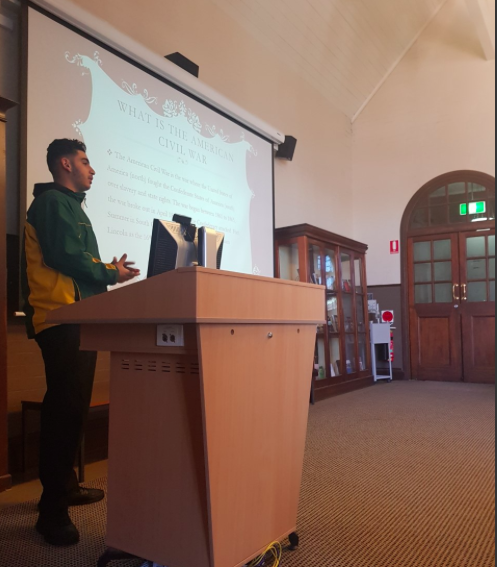
Social Inclusion in History looks forward to continuing and building on work like this, in the 2018 Program!
By Bridget Neave & Emma Kluge from the Social Inclusion Unit
Scandals and Historical Curiosity
In this blog entry, Professor Kirsten McKenzie reflects on the utility of studying historic scandals. Her thoughts are drawn from the presentation she gave at a plenary session on Historical Curiosity at the recent History Postgrad Conference, “The Past and the Curious” in November 2017.

Historical Curiosity
I’ve taken inspiration from the theme of this conference in two ways – firstly, what use can we make of curious incidents in the past? And, secondly, how do we deal with our own curiosity about them?
I’m still not entirely sure whether this is by accident or design but I’ve come to realise that much of what I research can be classed as ‘curious’. I don’t mean in the sense that the past is another country, and what might seem odd to us was not so previously. These are events and personalities who were considered downright weird at the time. My two most recent books are both about convict impostors in the first half of the nineteenth century, although their impersonations were undertaken with very different motivations and effects.
One, the improbably named John Dow, was a con artist seeking gain through identity theft. The other, who began his life as Alexander Kaye and ended it as William Edwards, was an escapee trying to hide under a false name. Both got caught. Neither would admit their guilt. In the case of Edwards the mystery persisted even after the prisoner took his own life. These cases excited much curiosity and debate in their own time, even if they were largely forgotten afterwards. When remembered, they were never considered the proper subjects of serious history.
By their very nature, Dow and Edwards were serial liars. Their actions confounded observers at the time, several of whom described them as insane. Much of their story remains unknowable. This brings me to my second point – what do we do, as historians, with our curiosity about the past. How should we direct that curiosity?
When I was sitting where you are now – and in the last year of my PhD – I gave a presentation at a large international conference where the papers were pre-circulated and where Ann Stoler was the keynote speaker. For those not in my field, Ann Stoler is one of the big names in imperial history, and was already an academic superstar in the late 1990s. So, you can imagine how I felt when mine was the paper she singled out for praise and discussion as part of her keynote address.
When I had found the material on which the paper was based, I knew it was a huge coup – I was writing a thesis about questions of gender and honour and I had found a cache of papers about alleged incest and concealed pregnancy involving the Chief Justice of the Cape Colony, Sir John Wylde, and his daughter Jane. The day I came upon the papers saw me quite literally shouting aloud with joy in the car all the way home from the archive. Which seems a bit sick when you consider the contents of the material itself.
But this wasn’t why Stoler singled out my paper for praise – she admired what she called (and I can still remember the gist 20 years later) my ‘postmodern determination’ not to become caught up in the solution to the story, but rather to leave the mystery unresolved. Instead of putting what had happened to Jane Elizabeth at the center of my analysis – was she the victim of rape or incest? had she killed her own child? had she had a lover whom it was somehow impossible to acknowledge? – I had focused in the paper on the wider significance of the scandal for understanding Cape colonial society – how it related to debates over slave emancipation, the press, and the nature of gendered discourse in public and private.
My immediate thought when I heard Stoler’s comment on my paper was – ‘well, I’m glad this great scholar thinks I have postmodern determination, I better start pretending I’ve GOT postmodern determination because the reality is that if I could have solved the mystery from the sources available I would gleefully have done so.’
I mention this as a foundation story in my career not only because it pointed the way to the historian I would become – one who specialised in scandal – but also because it took the process of writing several books to work through quite how incisive Stoler’s comment was to how we should approach the phenomenon of scandal. Indeed, she likely didn’t realise herself the significance of what in retrospect was probably just an off-hand remark.
If historians want to understand the kind of everyday attitudes that are the focus of cultural history, why work on scandals? They are surely unusual events by definition? But, of course, some people are scandalous, only if others are not. So, they allow us to see where the lines of acceptable and unacceptable behaviour are drawn and constantly renegotiated.
Secondly, they generate extensive sources and articulate what are often unspoken assumptions about proper behaviour. Scandals can also have important effects in bringing about social change – they can involve the rise and fall of public figures, they can have concrete political effects by bringing unacceptable behaviour under public scrutiny. They can be used by the powerless to shame and expose the powerful. They can be used as political traction to bring about desired outcomes, often only peripherally related to the original scandal itself. All of this is inherently unstable and unpredictable – scandals are extremely difficult to manipulate. They often start out as being about one thing or person and end up being about something quite different. The scandal of John Wylde and his daughter is a textbook example of this.
For all these advantages, the historian of scandal must be prepared to have her curiosity frustrated. She must always face the prospect of suffering what the novelist A.S. Byatt calls ‘narrative greed’ – and of accepting that this greed will not be satisfied. This is not to say that narrative is a bad thing – but it isn’t the only thing. There is always the search for the good story when writing about scandal, the satisfaction of finding out ‘what happened’, of marshalling all the twists and turns of plots and sub-plots.
It is notable how often historians of scandal use the language of plots, or of drama when they are setting the scene. We need to be honest about the narrative pleasures of this sensationalism. There are very good reasons why we might want to know what happened. But as I tell my students in the unit ‘Sex and Scandal’, some really bad history – often for general audiences – can be written about scandals in the name of telling stories. This risks not only being bad quality, but having bad effects, simply interested in the prurient details, details that are taken for granted and sensationalized, with no attempt to understand what it all means.
It is worth mentioning that I found the Wylde material (marked as “under restricted access”) with the help of a very experienced archivist – and he said quite explicitly that he had only brought it to my attention because he knew my scholarship and he was satisfied that I would deal with it responsibly. (I’m glad he didn’t see me shouting in the car on the way home.) Our curiosity is natural, and important in getting things right, but it is important not to become caught up in a historian-as-detective approach when dealing with scandal. This is not CSI Archive. Sometimes the best solution is to set aside one’s natural curiosity to discover a secret – or to become curious about something else.
Let me end with an example of this from my most recent book. One of the most challenging parts of writing Imperial Underworld was addressing an incident in the life of William Edwards that has been written about numerous times – but never in a scholarly way. This involved a notorious scandal that was intensively investigated at the time – without a satisfactory solution. An anonymous placard was posted on the streets of Cape Town accusing the Governor, Lord Charles Somerset, of “buggering Doctor Barry”. No copy survives. Various accounts of its wording exist. There were even doubts expressed as to whether it had ever really existed, for only one person admitted to having seen it before it disappeared.
William Edwards was the chief suspect, but nothing was ever proved against him. The incident has sparked intensive curiosity amongst popular historians, particularly those writing about Barry, whose sex remains a subject of debate. Serious scholars, however, have shied away from the incident – unable to find an analytical purpose for it, even though it took place in the midst of an intensively studied period of Cape history.
What should spark our curiosity about the placard affair – what questions should we be asking about it as historians? ‘Narrative greed’ leads us to two obvious ones – were Somerset and Barry engaged in sexual relations? And, who put up the placard? The answer to the first question has eluded countless biographers of both Barry and Somerset. For what it is worth, a recent book on Barry has uncovered some persuasive evidence that the doctor was born female though that leaves us no further ahead on the question of relations with Somerset. And with regard to the second question – \who put up the placard – the historian has access to only the same evidence, admittedly voluminous, that was collected in the original case. Can she expect to succeed where a determined public prosecutor under intense political pressure failed some 200 years earlier?
I didn’t consciously think of Ann Stoler’s comment while I wrestled with how to write about the placard scandal in a useful way. Nevertheless, her response to that paper on the Wyldes some 20 years ago doubtless had a role in helping me to work out how I approached this problem. For my purposes, the scandal’s utility lies precisely in recognising its tenuous hold on reality – using that as the object of my analysis rather than an obstacle to my analysis – and in tracing the tactics of ideological warfare that broke out in its aftermath.
As a way of understanding the processes of imperial reform debates, my interest was more in the political management of the scandal than in the alleged sexual improprieties of Lord Charles Somerset and Dr James Barry or the identity of the persons who claimed to have brought them to light. If we look carefully at the sources we can see what was very clear to contemporaries but what historians have missed. What was most significant about the incident was not the contents of the placard itself but the “political ends” – in the words of contemporaries – to which its existence could be put. Despite the dangerous accusations allegedly made in the text (remember our evidence that the placard even existed is tenuous) sex drops out of the public discussion remarkably quickly. What ensues is effectively a public relations struggle between Somerset and his political opponents in both Britain and the Cape, a debate that revolved not around his sexual misconduct but around his tactics of information gathering and the use of spies. Historians can and often should use scandals to ask and answer different questions from the ones that preoccupied those living through them. Because after all, what we are most curious about is working out methods to understand the past as best we can.
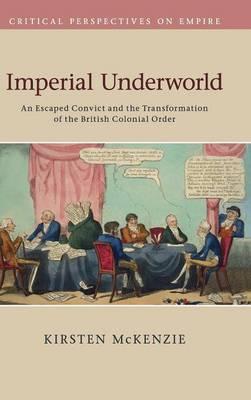
Alumni Survey
In this blog entry, postgraduate coordinator Dr Frances Clarke reports on the results of a survey she initiated of our PhD recipients over the last twenty years. You can download the results and a presentation she made on “Planning a Future in the Midst of Insecure Job Prospects” for the November 2017 History Postgrad Conference here: Download file
Over the past 20 years, 169 graduates have received doctorates. Subtracting those who have retired, died, or completed in the past five years (most of whom are still looking for full-time work), 139 graduates remain. Of this number:
31.6% have a tenured academic job
11.5% work in public history (as curators, archivists, policy officer, grants coordinators, consultants, city historians, tourism industry employees)
7.9% are in university admin (as research coordinators, faculty research managers, senior strategy and projects officers, senior advisers and governance specialists, research fellows, etc.)
7.1% have a postdoc
7.1% are in government employment (as policy officers, researchers, analysts, etc.)
7.1% work in the non-profit sector or are self-employed (as freelance writers, editors, indexers, research affiliates, or activists)
3.5% are still looking for an academic job after 5 years
3.5% are in teaching (as high school teachers, curriculum developers, textbook designers, etc.)
1.4% are employed in arts-related fields (as journalists, documentary film makers, screen writers).
3.5% are employed in the private sector (as lawyers, consultants, small business owners).
15.1% Could not be located (most likely because they have retired, moved overseas, or left the paid workforce).
The number of individuals in each category:
44 Academic (tenured)
16 Public Hist / Researcher / Editor
11 Univ Admin
10 Postdoc
10 Govt Emp
10 Nonprofit Emp / Self Emp
5 Casual 5+yrs
5 Teaching
2 Arts (journalism/doc film maker/theatre)
5 Private sector (business/law/consultancy)
21 unknown / not currently looking for work / retraining
16 Casual or contract <5 yrs 14 Retired / deceased == 169
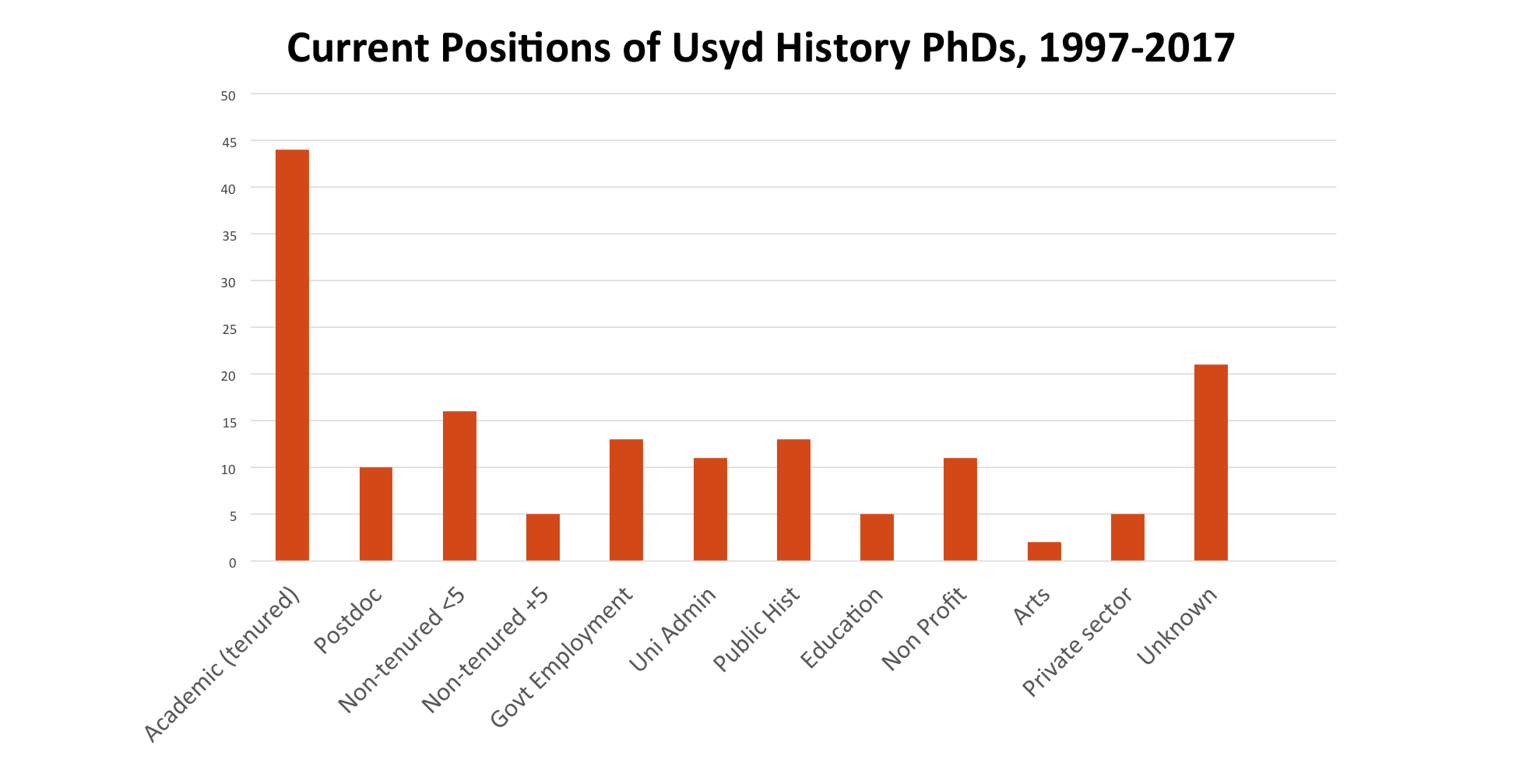
Many Paths Beyond the PhD
In this blog entry, postgraduate coordinator Dr Frances Clarke reports on a new initiative, and a recent workshop, for our postgraduate community.
23 November 2017
During the six years that it took to finish my PhD I spent a good deal of my time in a state of mild panic over the idea that I was in my mid 30s and yet had no savings, no superannuation, a massive student loan debt, and not much hope of ever getting a tenured job. Believing—mistakenly, as it turned out—that academic employment was a pipe dream, I spent the six months after my dissertation defense reading a lot of self-help books about graduates who had retrained after the PhD or branched out into diverse fields.
It occurred to me in doing this reading that there was a world of choices I’d never considered—careers just as interesting and politically-fulfilling but potentially less competitive and stressful than a lectureship. Reading this work made me realize that my professors emphasized academic careers not because they were our only possible choices, but because these were the only jobs that most academics knew about. After all, most of us have gone straight from study to teaching without experiencing any other kind of workplace. We have no real idea what it would be like to work as a policy officer for the government, the curator of a museum, an archivist, or a documentary film maker.
But our former PhD students do have this knowledge, since they’ve gone on to all kinds of interesting careers. I discovered this fact while putting together some research on where our history graduates end up for our website. The results of this survey can be found here.
It turns out that our History PhD recipients are everywhere. They are the literary Director of the Melbourne Theatre Company; the Head of the Documentary Division at the Australian Film, TV, and Radio School in Canberra; the Executive Officer at the Historical Publications and Information Section at the Department of Foreign Affairs and Trade; the Director of the National Museum in Canberra and the City Historian of Sydney. They teach high school students, run archives and museums, administer universities, create policy, produce journalism, and manage small businesses.
Seeing the diverse ways our graduates put their training to use, it was apparent that one of the things we could do for our students is to introduce them to a range of careers, and do this while they were still completing their training, so that they could have these prospects in mind and hopefully even plan for them. It stood to reason that the best way to do this was to introduce them to former grad students who had once been in their shoes and gone into the workforce.
For our inaugural “Many Paths Beyond the PhD” day, we invited four USyd history alumni to campus to talk about their jobs:
• Dave Trudinger, Director of Energy and Climate Change, Resources & Land Use Branch in the NSW Government’s Department of Premier and Cabinet.
• Emma Dortins, Cultural Heritage Researcher at the Office of Environment & Heritage, NSW
• Richard Lehane, Archivist at State Records Office, NSW.
• Nerida Campbell, Curator, Police and Justice Museum, NSW.
I asked our speakers to describe their career trajectory and talk about how their background in history informed their current role, as well as to give advice to students who might want to consider a job in their areas.
None of the jobs sounded at all how I’d pictured them. Dave, for instance, talked about his work for the NSW government as primarily involving “packaging and presenting information” – sourcing data quickly and efficiently on a whole range of topics for use in a wide variety of ways. Nimbleness and flexibility were clearly essential in his role—and, indeed, in all of the jobs that the four speakers described, since the one thing they had in common was the necessity of dealing with a rapidly changing environment, a diversity of opinions, and a plethora of different tasks.
Emma described her work in managing the state heritage register as encompassing not just questions of what sites to preserve but also dealing with all the intersecting interests that went into such decisions as well as managing a team of staff. In contrast, Richard, working at the State Archives, described spending most of his days deciding what to destroy rather than what to keep, while also noting that archival staff were engaged in activities ranging from the conservation and digitization to curating displays and assessing collections.
For most of us, Nerida’s job was perhaps the easiest to visualize initially, since her role involves telling stories and extracting meaning from objects in ways that are common to all historical work and recognizable to anyone who has ever visited a museum. Yet she explained that even this seemingly straightforward objective requires considerable flexibility since her main dilemma is in finding ways to bring history to life that can appeal simultaneously to a ten-year-old and a retiree and to people from every conceivable walk of life.
One of the most powerful things to come out of the session was simply a sense of expanded possibility. Within the university sector there is constant crisis talk: declining budgets, rampant managerialism, expanding academic workloads, a contracting ‘job market’ for postgraduates. But here were four people with jobs that were interesting and challenging, all using history in various ways.
It reminded me of a piece that I’d read in American Historical Association’s newsletter Perspectives a few years back, which argued that academics’ discussions of a ‘job market crisis’ were overly parochial. Employment in history-related fields has actually been expanding in recent times as local, state, and federal governments pour funding into various history-related activities. It is only our narrow fixation on academic jobs that has prevented us from seeing this trend. In passing on this anxious vision to our students, we leave them with the message that we value only the narrowest range of possibilities for using history, which is simply not the case.
Interestingly, all of our four speakers had been involved in recruiting or hiring, so they had a range of useful advice about ways candidates could prepare for jobs in their fields, or prepare for job interviews.
One of the speakers suggested that all history-related employment required “core competencies.” They suggested that students look at job listings and see what competencies were requested, and then think about ways they could demonstrate proficiency in such areas. Jobs in public history, for instance, typically require the ability to talk to diverse audiences. Anyone wanting to move into this area might thus want to think about publishing in different kinds of venues or giving talks to different kinds of audiences in order to demonstrate such expansiveness.
Similarly, they might think about how to make use of the fact that they are at a large, well-funded research institution, willing to provide them with additional training. Pondering the kinds of training that might prove useful to employers (in statistical analysis, spreadsheets, data management, or digital technology, for instance), they might seek out such training, or ask for it to be provided.
Offering proof of competencies or abilities was another important point that came up. As one of the speakers noted, it’s insufficient for a job candidate to simply refer to their acquisition of particular skills; the candidate has to prove their claim. Stating that one can communicate to broad audiences, for instance, becomes much more credible if accompanied by a statement along the lines of: “I wrote for such and such a website/blog/etc. which is read by such and such an audience, measured in such and such ways.”
And in terms of applying for jobs, everyone emphasized the importance of background research. Nerida said that applicants should call the contact person on a job advertisement and ask about all the different elements of a role. They should make sure that they have questions to ask at the end of the interview. And they should understand something about the institution or culture into which you’re applying to work. Dave advised, for instance, that if the job is with a government department, the applicant should find out what the relevant minister has recently been saying.
Likewise, Nerida noted that anyone looking for a job in a particular museum should go there and see the space – not least because it’s become common to ask applicants for such jobs to come up with a creative proposal for a particular object, with the aim of seeing how well the candidate can think about diverse audiences and communicate ideas. A smart candidate would think not just about the space and the audience, but also try to link their plan to the institution’s own mission (strategic plans and mission statements are especially useful reading when you’re looking for a job).
How to find a job or get some experience in different fields understandably came up numerous times. One of the speakers suggested that postgrads might consider giving their CVs to an executive recruiter such as Charter House or Chandler McCloud. These agencies can sometimes find you casual or fixed-term work in particular areas so that you can get a taste for different kinds of employment.
Richard stressed that there may well be additional training that’s required after the PhD for certain jobs, such as in his field of archival management. For anyone interested in this area, there are online degrees in archival management and graduate programs through the National Library.
But the best way to know if an archive might be your ideal working environment is to go to the regular branch meetings of the Australian Society of Archivists
In a similar way, Nerida said that anyone interested in jobs in museums or public history would do well to go to conferences and meetings of Museums Australia, the main national association for the museums and galleries sector, or simply to attend talks at the State Library, particularly when given by archivists or curators, and make connections with people.
Finally, a couple of more concrete issues came out of the day. Richard promised to take us on a tour the stacks at the NSW archive while giving us an insiders’ view of archival management (excursion!) And several speakers noted the importance of linking one’s topic to broader themes, questions, or fields as well as thinking about the production of a thesis in terms of “project management.”
Both of these ideas, and several of the ones above, will become useful in the professionalisation seminar that the department will run next semester (and hopefully from then on). We’re intending this seminar as a way to help postgraduate students conceptualise their training, break down the discrete parts of what they do, and be able to talk about these to non-academic audiences, and generally claim the expertise and authority that comes from the completion of a history doctorate.
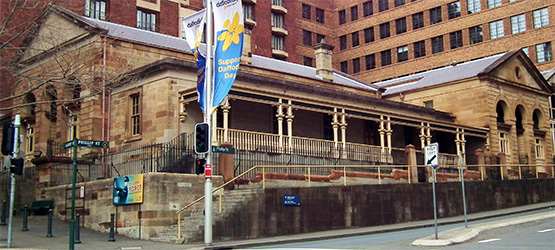
Police and Justice Museum, Sydney, NSW
Postgraduate Conference – The Past and the Curious
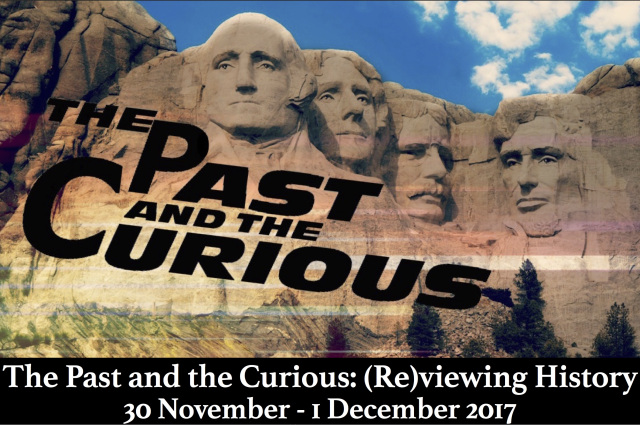
Postgraduates of the Department of History at the University of Sydney invite you to attend a two-day interdisciplinary conference held Nov. 30-Dec. 1, 2017.
Some people call historians the detectives of the past. At the University of Sydney’s 2017 postgraduate history conference, we want to know: what are the mysteries you’re uncovering? What are you curiously (and furiously) researching? How are you re-framing our understanding of the established, and seemingly ordinary, past? This two-day conference will allow postgraduate historians from across Australia, and beyond, to share their investigations of the past — and to share in the spirit of historical curiosity.
Themes, covering the ancient to the twenty-first century, include (but are not limited to):
(Re)viewing history through a transnational lens;
Investigations through Oral History;
(Re)viewing Race
Delving into Digital Histories
(Re)viewing Histories of Sexuality
(Re)viewing Gender
(Re)viewing Indigenous Histories
Public Histories
Histories of Emotion
History and (Auto)Biography
(Re)viewing Labor Histories
Click here to explore the Conference website and to view a full conference programme,
Conference: Sovereignty, Economy and the Global Histories of Natural Resources
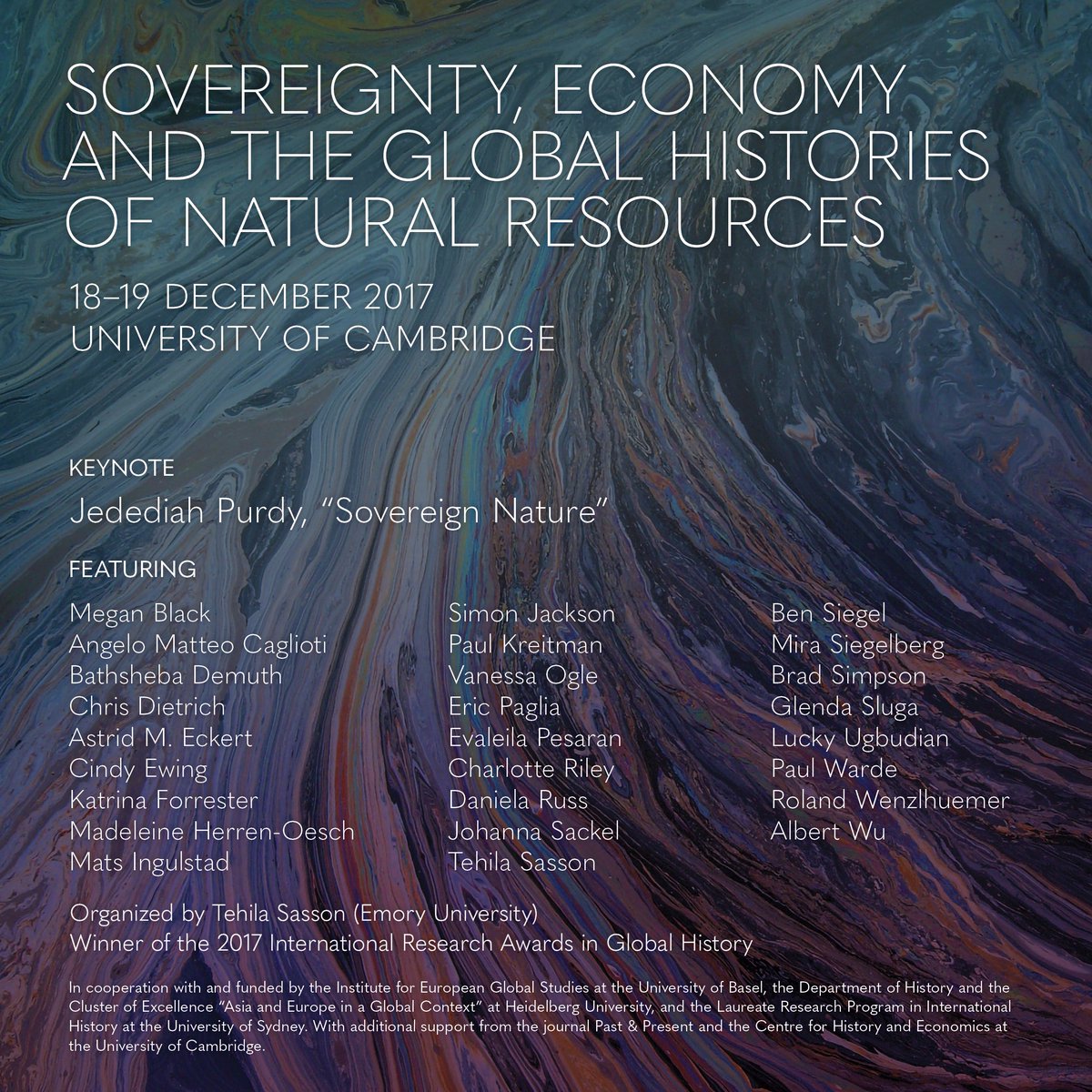
An International Symposium sponsored by the International Research Award in Global History,
Universities of Sydney, Basel, and Heidelberg
18-19 December 2017
Hosted by the Centre for History and Economics, University of Cambridge
Over the course of the nineteenth and twentieth century natural resources have given shape to the history of sovereignty, law, and commerce across the globe. The struggle to protect, own and extract natural resources has mobilized local authorities, national agencies and international bodies. The Standing Rock water protectors are perhaps most well-known recent example of such histories, but is certainly not the only one. From disputes over social and economic rights to dueling religious and economic understandings of resources and their value, things like carbon, gold and water have determined the lives of national and local communities.
This international symposium invites scholars to examine the history and political ecology of various natural resources – animal, vegetable, or mineral —in the modern era. It asks how natural resources such as carbon, air, and water became the subject of legal, environmental, and economic forces over the course of the nineteenth and twentieth century and how, in turn, these resources have themselves came to shape national and international histories? Papers that focus on the role of local actors, rather than solely international elites, that examine contested spaces and resources beyond the Western Hemisphere, and take an interdisciplinary approach to this global history of natural resources will feature. Papers will address (but are not limited to) the ways in which the political ecology of various natural resources has come to shape:
Border disputes, international territories and national sovereignty
Minority and religious rights
Movement and mobility of people, animals and microbes
Social and economic geographies and spaces
Cultural practices and institutions
Technical expertise and knowledge
The role of nongovernmental and economic agents in local and national contexts
We are pleased to note that Professor Glenda Sluga is co-sponsor of this conference, which was the winning concept in an international competition. A copy of the poster is available here, and you can download the final program here.
Thinkers Guide to the 21st Century

History department staff are regulars in the ‘Thinkers Guide to the 21st Century’ talk series brought to you by the Sydney Ideas/Laureate Research Program in International History.
You can listen to the podcasts on previous topics such as The New International Order (Glenda Sluga), Authoritarianism (Dirk Moses), Feminism in the Age of Populism, and Globalisation (Glenda Sluga and Thomas Adams).
If you missed out on this series, the Laureate Research Program in International History is bringing it back with Sydney Ideas in Semester 2, 2018. The series averaged 300 subscriptions for each event; we hope to keep up the momentum and are holding a competition for next year’s topics. More information from Sydney Ideas soon.
